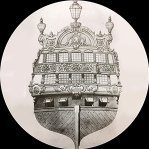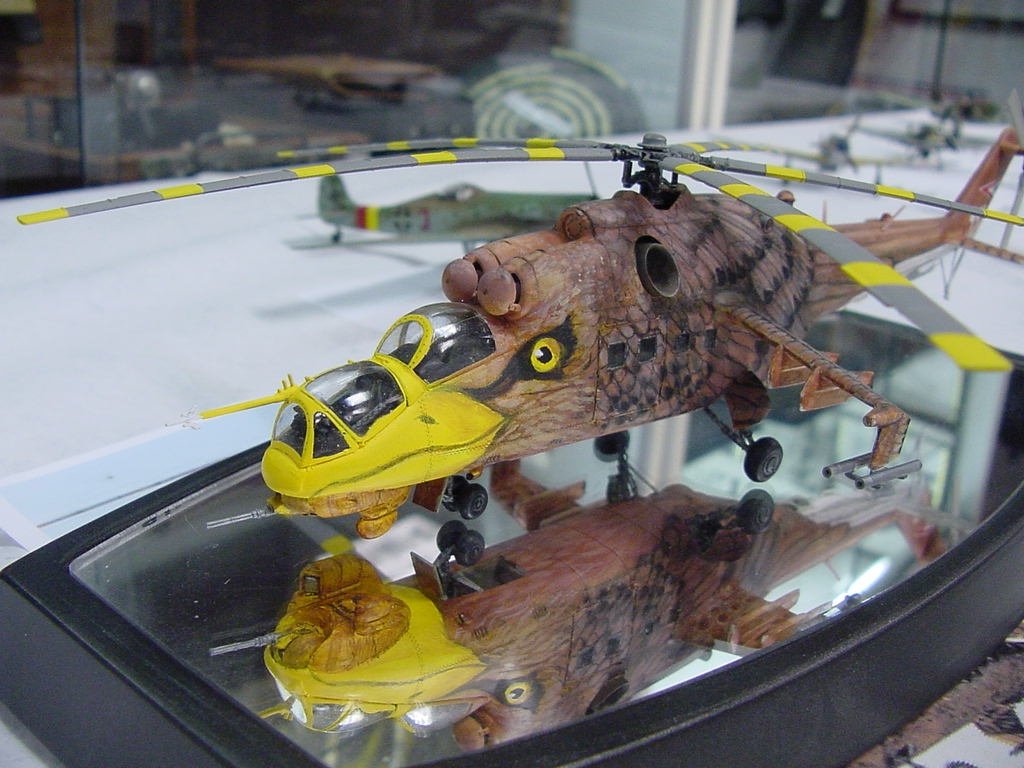-
Posts
406 -
Joined
-
Last visited
Profile Information
-
Gender
Male
-
Location
Hartford, CT USA
Recent Profile Visitors
-
 daHeld73 reacted to a post in a topic:
HMS Bellerophon 1786 by AON – scale 1:64 – 74-gun 3rd Rate Man of War - Arrogant-Class
daHeld73 reacted to a post in a topic:
HMS Bellerophon 1786 by AON – scale 1:64 – 74-gun 3rd Rate Man of War - Arrogant-Class
-
 daHeld73 reacted to a post in a topic:
HMS Bellerophon 1786 by AON – scale 1:64 – 74-gun 3rd Rate Man of War - Arrogant-Class
daHeld73 reacted to a post in a topic:
HMS Bellerophon 1786 by AON – scale 1:64 – 74-gun 3rd Rate Man of War - Arrogant-Class
-
 hexnut reacted to a post in a topic:
HMS Black Joke by highlanderburial - 1/50 Scale - by Todd Wardwell
hexnut reacted to a post in a topic:
HMS Black Joke by highlanderburial - 1/50 Scale - by Todd Wardwell
-
 hexnut reacted to a post in a topic:
HMS Black Joke by highlanderburial - 1/50 Scale - by Todd Wardwell
hexnut reacted to a post in a topic:
HMS Black Joke by highlanderburial - 1/50 Scale - by Todd Wardwell
-
 Ferrus Manus reacted to a post in a topic:
Spanish Galleon 1607 by kirill4 - Lee - PLASTIC - 1:100
Ferrus Manus reacted to a post in a topic:
Spanish Galleon 1607 by kirill4 - Lee - PLASTIC - 1:100
-
 hexnut reacted to a post in a topic:
USS Maine by ERSRich - FINISHED - BlueJacket Shipcrafters - 3/32
hexnut reacted to a post in a topic:
USS Maine by ERSRich - FINISHED - BlueJacket Shipcrafters - 3/32
-
 hexnut reacted to a post in a topic:
9 Pound Naval Cannon 1786 by AON - FINISHED - 1:12 scale
hexnut reacted to a post in a topic:
9 Pound Naval Cannon 1786 by AON - FINISHED - 1:12 scale
-
 hexnut reacted to a post in a topic:
9 Pound Naval Cannon 1786 by AON - FINISHED - 1:12 scale
hexnut reacted to a post in a topic:
9 Pound Naval Cannon 1786 by AON - FINISHED - 1:12 scale
-
 popeye the sailor reacted to a post in a topic:
VARYAG by RGL -FINISHED - Artwox - 1/350 - Plastic, resin and photoetch - Protected Cruiser
popeye the sailor reacted to a post in a topic:
VARYAG by RGL -FINISHED - Artwox - 1/350 - Plastic, resin and photoetch - Protected Cruiser
-
 EricWilliamMarshall reacted to a post in a topic:
HMS Warspite by Old Collingwood - FINISHED - Academy - 1/350 scale - PLASTIC
EricWilliamMarshall reacted to a post in a topic:
HMS Warspite by Old Collingwood - FINISHED - Academy - 1/350 scale - PLASTIC
-
 EricWilliamMarshall reacted to a post in a topic:
HMS Warspite by Old Collingwood - FINISHED - Academy - 1/350 scale - PLASTIC
EricWilliamMarshall reacted to a post in a topic:
HMS Warspite by Old Collingwood - FINISHED - Academy - 1/350 scale - PLASTIC
-
 EricWilliamMarshall reacted to a post in a topic:
Matthew 1497 by Ilhan Gokcay - FINISHED - Scale 1/50
EricWilliamMarshall reacted to a post in a topic:
Matthew 1497 by Ilhan Gokcay - FINISHED - Scale 1/50
-
 hexnut reacted to a post in a topic:
Muscongus Bay Lobster Smack by SkiBee - FINISHED - Model Shipways - 1:24 Scale
hexnut reacted to a post in a topic:
Muscongus Bay Lobster Smack by SkiBee - FINISHED - Model Shipways - 1:24 Scale
-
 hexnut reacted to a post in a topic:
Muscongus Bay Lobster Smack by SkiBee - FINISHED - Model Shipways - 1:24 Scale
hexnut reacted to a post in a topic:
Muscongus Bay Lobster Smack by SkiBee - FINISHED - Model Shipways - 1:24 Scale
-
 hexnut reacted to a post in a topic:
USS Tennessee 1869 by Keith Black - scale 1:120 - Wood Hull Screw Frigate - ex Madawaska 1865
hexnut reacted to a post in a topic:
USS Tennessee 1869 by Keith Black - scale 1:120 - Wood Hull Screw Frigate - ex Madawaska 1865
-
 Moab reacted to a post in a topic:
21 ft Yawl Longboat for a Sixth Rate by vaddoc - FINISHED - Scale 1:10 - Plans from the National Maritime Museum
Moab reacted to a post in a topic:
21 ft Yawl Longboat for a Sixth Rate by vaddoc - FINISHED - Scale 1:10 - Plans from the National Maritime Museum
-
 mtaylor reacted to a post in a topic:
HMS Victory by dafi - Heller - PLASTIC - To Victory and beyond ...
mtaylor reacted to a post in a topic:
HMS Victory by dafi - Heller - PLASTIC - To Victory and beyond ...
-
 dafi reacted to a post in a topic:
HMS Victory by dafi - Heller - PLASTIC - To Victory and beyond ...
dafi reacted to a post in a topic:
HMS Victory by dafi - Heller - PLASTIC - To Victory and beyond ...
-
I always love your hyper-detail updates. I am making the same face as all those deadeyes! 😮
-
Joseph Conrad and the Otago, Allen Villiers and the Joseph Conrad?
-
Very nice work. vaddoc! Are you using Rhino? First of all, I understand the pushback from the "ship's curves and paper" fans, but at the same time, I think part of the frustration some experience is that CAD offers a LOT more precision, and old boats simply were not that precise. Go down to the drydock on a nice, salt-spray-blowing November day in Bristol, crawl around a large hull taking measurements, dodging teams of workers doing sheathing and caulk, go back to the office and calculate the offsets by candlelight--Or during the initial build, lay out the stations with splines, ducks and chalk on the lofting floor, then have wrights rough the sections out of wood with a pit saw and broadaxe.... It's enough to give a quality assurance/risk mitigation director nightmares... I think the historian in all of us can't help but have enormous respect for primary sources, or high-profile scholars working at an earlier time (Chapelle, Longridge, et al.), but the reality is that by CAD standards, the original plans often weren't all that accurate. One of the biggest problems in lofting a hull in 3D is getting the stations and WL's to line up and meet while being fair in both directions. I have yet to trace a vintage plan where that happens, because the original was never fully-resolved until wood started coming together. There is a bit of an 80/20 rule--what is good enough to start construction without wasting too much material? When doing it in CAD, every tiny surface imperfection is abundantly highlighted; where on the model, it's an issue that may be solved in 30 seconds with some 120 grit. vaddoc, the truly good news is that now that you've put the work in to make a faired hull, once you make it solid you can boolean ribs and even planking out of it, setting up shiplap profiles at a station and extruding single-rail surfaces using the planking curves projected onto the hull. You can also offset the polysurfs to accommodate whatever you choose for wood thicknesses... Great-looking hull!
-
They had rubber pads on the tracks... Graf Z looks amazing!
- 345 replies
-
- graf zeppelin
- trumpeter
-
(and 2 more)
Tagged with:
-

Ala-Kart by CDW - FINISHED - AMT - 1:25 Scale - Plastic
hexnut replied to CDW's topic in Non-ship/categorised builds
I tape a cut length of plastic straw to the nozzle to decant into the airbrush... -

Ala-Kart by CDW - FINISHED - AMT - 1:25 Scale - Plastic
hexnut replied to CDW's topic in Non-ship/categorised builds
Tamiya also makes a pearl clear (TS-65) that is pretty nice--helps even out coverage... https://www.amazon.com/Tamiya-85065-TS-65-Pearl-Clear/dp/B0006SG21C -
Great work! I've also had good luck with Vallejo paints, both w/ brush and airbrush. They go on thin enough to keep detail and permit layered glazes, but also cover well enough so that too many coats aren't needed... https://acrylicosvallejo.com/en/producto/hobby/sets/war-games-en/french-infantry-napoleonic-wars-en/
- 2,444 replies
-
- heller
- soleil royal
-
(and 9 more)
Tagged with:
-
Brilliant work, as always! Reminding me a bit of some of Charles Sheeler's great artwork... 🙂
- 238 replies
-
- leviathan
- troop ship
-
(and 2 more)
Tagged with:
About us
Modelshipworld - Advancing Ship Modeling through Research
SSL Secured
Your security is important for us so this Website is SSL-Secured
NRG Mailing Address
Nautical Research Guild
237 South Lincoln Street
Westmont IL, 60559-1917
Model Ship World ® and the MSW logo are Registered Trademarks, and belong to the Nautical Research Guild (United States Patent and Trademark Office: No. 6,929,264 & No. 6,929,274, registered Dec. 20, 2022)
Helpful Links
About the NRG
If you enjoy building ship models that are historically accurate as well as beautiful, then The Nautical Research Guild (NRG) is just right for you.
The Guild is a non-profit educational organization whose mission is to “Advance Ship Modeling Through Research”. We provide support to our members in their efforts to raise the quality of their model ships.
The Nautical Research Guild has published our world-renowned quarterly magazine, The Nautical Research Journal, since 1955. The pages of the Journal are full of articles by accomplished ship modelers who show you how they create those exquisite details on their models, and by maritime historians who show you the correct details to build. The Journal is available in both print and digital editions. Go to the NRG web site (www.thenrg.org) to download a complimentary digital copy of the Journal. The NRG also publishes plan sets, books and compilations of back issues of the Journal and the former Ships in Scale and Model Ship Builder magazines.






